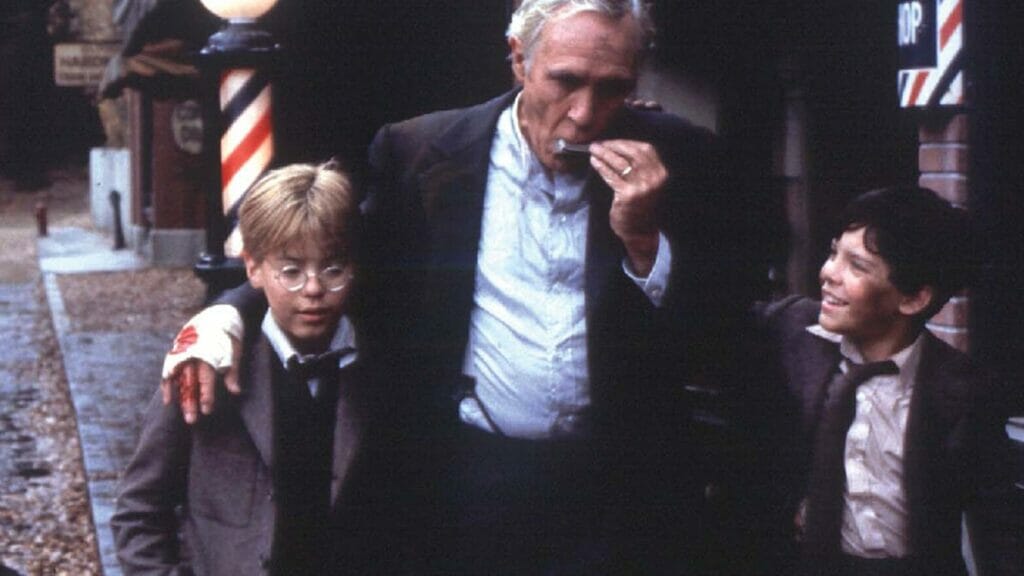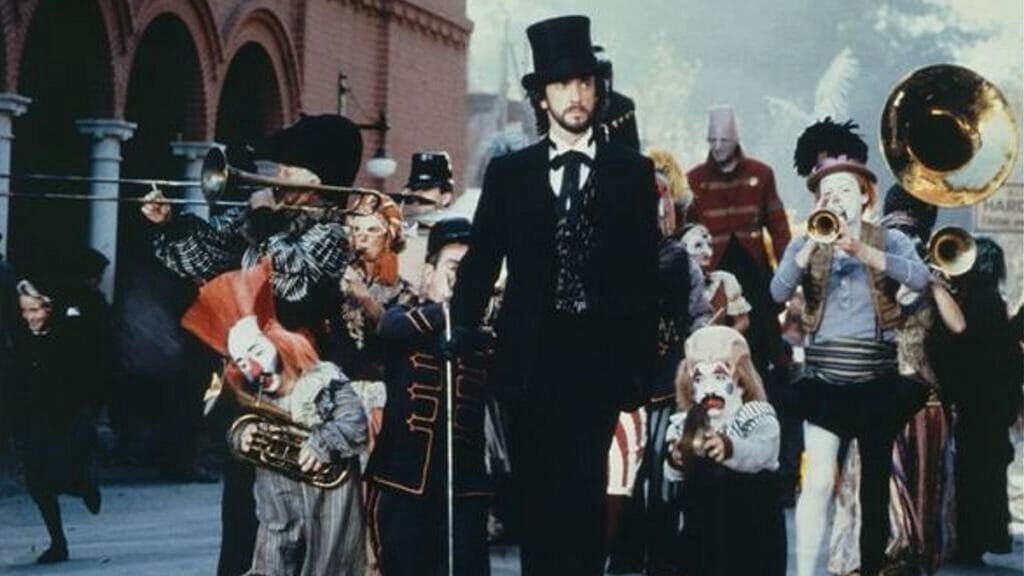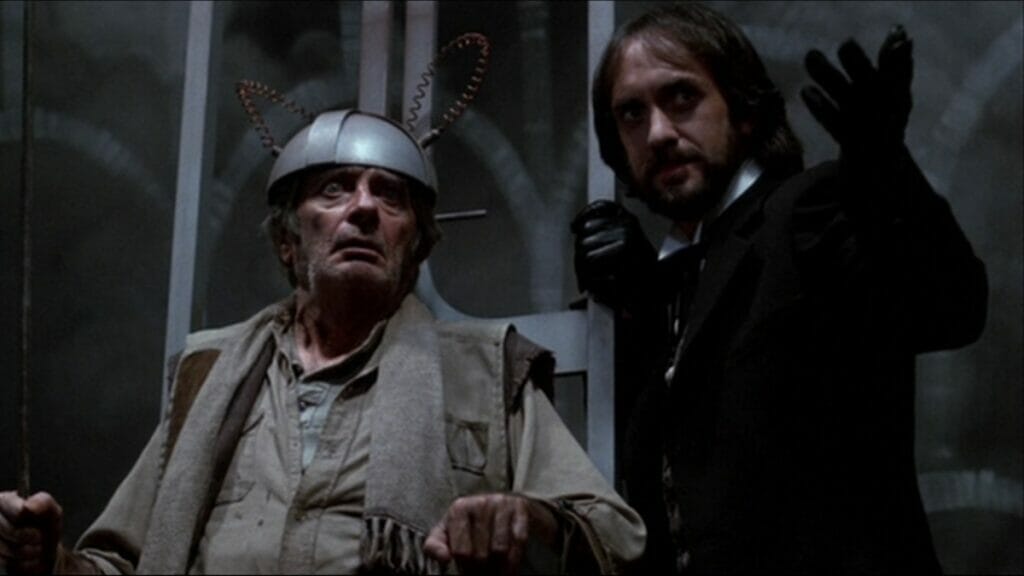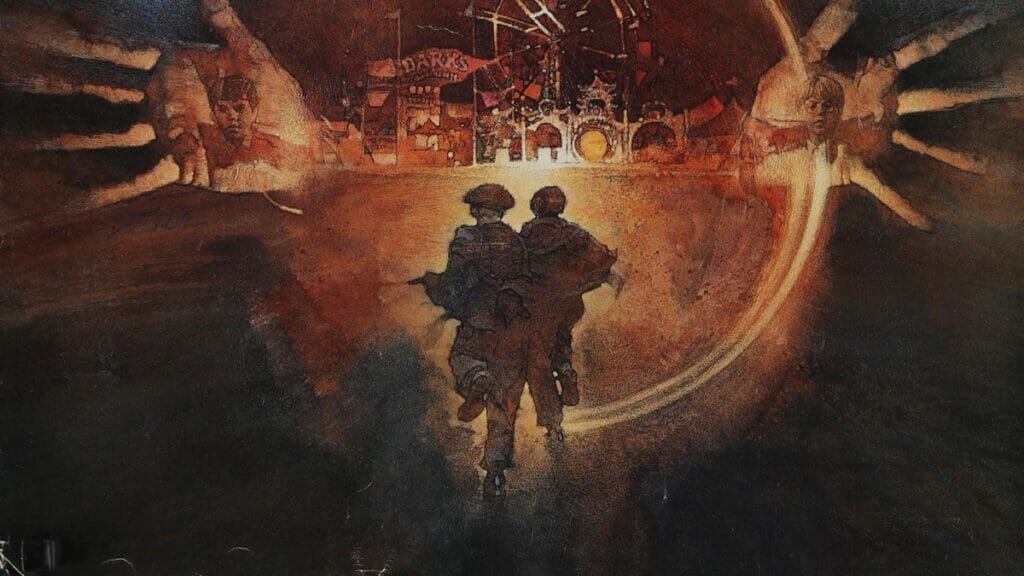The Disney flop from its struggle era remains a compelling curiosity 40 years later.
In the wake of the death of its founder and namesake, the Walt Disney Company found itself in a bit of a tailspin in the late 60s and 70s. They were unwilling to stray too far away from being purveyors of family entertainment but failed to recognize shifting audience tastes. For about a decade after Disney’s passing, the studio’s cinematic output consisted of regular reissues of their animated classics and decidedly juvenile live-action offerings. New animated films were few and far between due to spiraling costs. Their live-action films were lousy with place-kicking mules, hirsute district attorneys, and the further adventures of Herbie the Love Bug. Herbie proved their last significant box-office hit when it (he?) debuted in 1969.
Toward the end of the Seventies, the studio’s box-office share had become barely a blip in the eyes of Hollywood. Finally, the people in charge realized something had to change. They began augmenting slates of old warhorses and forgettable junk like The Apple Dumpling Gang Rides Again with more ambitious projects. For instance, in 1979, they released The Black Hole. It was an attempt to cash in on the sci-fi bandwagon inspired by Star Wars, a film that mixed old-fashioned storytelling and cutting-edge technology, just like Uncle Walk used to. An adaptation of S.E. Hinton’s serious-minded YA novel Tex and the wildly ambitious video game-inspired Tron soon followed.

One of the oddest films from this period was Something Wicked This Way Comes, an expensive 1983 adaptation of the 1962 novel by Ray Bradbury. After suffering through a troubled production, it proved a major box-office failure. Parents feared it would be too scary for little kids, while older viewers scoffed at the notion of a Disney horror film. To discern the studio’s affection for the feature, try searching for it on Disney+. Yet, despite the hiccups and poor reputation, Something Wicked This Way Comes remains a surprisingly potent work of dark fantasy. Moreover, even now, it features some of the creepiest moments in the whole of the Disney canon.
Set in the small town of Green Town, Illinois, Something Wicked This Way Comes centers around two 12-year-old best friends, Will Halloway (Vidal Peterson) and Jim Nightshade (Shawn Carson). Throughout the opening, the audience follows them around town, meeting a number of the locals. They include Miss Foley (Mary Grace Canfield)–the aging schoolteacher who yearns for her local beauty day–lonely barber Mr. Crosetti (Richard Davalos), money-obsessed cigar store owner Mr. Tetley (Jake Dengel) and Ed (James Stacy)–a former local football hero turned bartender dreaming of his glory days.

There is also Will’s father, Charles (Jason Robards). He’s the risk-averse town librarian haunted by how his nature nearly led to his son’s death, and his age might limit his ability to be a good dad. Jim’s dad, on the other hand, took off years ago, leaving him and his mother (Diane Ladd) behind.
Things change dramatically with the arrival of Mr. Dark’s Pandemonium Carnival. Seemingly springing up overnight out of nowhere, it draws the townspeople like moths to the flame. This is, of course, no ordinary carnival. Mr. Dark (Jonathan Pryce), with the aid of his associate, The Dust Witch (Pam Grier), seems to have the ability to make the deepest desires of its visitors come true. Crosetti finds himself surrounded by beautiful women. Tetley wins a thousand dollars at one of the games. Somehow, even Miss Foley returns to her youthful form.
Alas, these wishes come with heavy costs. Soon, Will and Jim discover what’s truly happening. This revelation puts them into the sights of Dark and his growing devotees. Only they, along with Charles–who has his own connection to the carnival–can save the day and the town.
Yet, despite the hiccups and poor reputation, Something Wicked This Way Comes remains a surprisingly potent work of dark fantasy.
Something Wicked This Way Comes had a particularly circuitous route to the screen. Bradbury originally wrote the story in the Fifties as a screenplay for Gene Kelly to direct. When that didn’t happen, he turned it into a novel. Others attempted to bring it to the screen, including directors ranging from Sam Peckinpah to Steven Spielberg. Stephen King reportedly wrote a screenplay adaptation. Still, it only came together around an adaptation written by Bradbury himself with Jack Clayton at the helm. Although Bradbury had envisioned the likes of Peter O’Toole or Christopher Lee as Mr. Dark, Disney decided to go with the less-well-known (and infinitely cheaper) Pryce in an early major screen role.
Unfortunately, even when production began, Something Wicked This Way Comes proved difficult. As filming progressed, Bradbury and Clayton found themselves butting heads with Disney executives over the tone. While the filmmakers sought to hew close to the book, the studio wanted a more overtly family-friendly direction. Before long, Bradbury and Clayton would also fall out after Clayton hired a new writer.

The difficulties didn’t stop there. First, a reportedly disastrous test screening of Clayton’s cut got him tossed from the project. A new director and a month of reshoots and edits followed. Then came the replacement of the George Delerue score by one from James Horner. Finally, some major special-effects set pieces were tossed. Among them was one that would have shown the carnival emerging from the smoke of the train, a significant early use of CGI technology.
Even if you weren’t aware of these complications, anyone watching the film can detect something went wrong along the way. The flow between the scenes is often abrupt and jumbled, as if footage had gone missing. There are points where the reshoots are obvious. For example, in a sequence in which a mass of spiders attacks Will and Jim, it is evident that Peterson and Carson have grown quite a bit since filming began.
A more fundamental problem occurs in the form of the ending. An effects-heavy climax replaced the low-key nuanced approach utilized by Bradbury in his book. While featuring the contributions of such masters as Art Cruickshank and Harrison Ellenshaw, it amounts to little more than a sound-and-light show. Frustratingly, it feels trucked in from another movie.
Ultimately…the movie does an outstanding job of translating Bradbury’s literary gifts into cinematic terms.
Nonetheless, the undeniably imperfect Something Wicked This Way Comes has moments that soar. Some make such an impact, it becomes easy to forgive the hiccups. It may take viewers a few minutes to adjust to the Faulkner-inspired dialogue rhythms. Ultimately, though, the movie does an outstanding job of translating Bradbury’s literary gifts into cinematic terms.
The choppiness due to the various reshoots is unavoidable. That said, Clayton still manages to do a good job of evoking both the pleasures and terrors of small-town life, as seen through the eyes of his young protagonists. Despite the limitations that came from working for Disney, he conjures up some legitimately creepy and unnerving imagery. It’s likely to still haunt many people who first encountered the feature in their younger years. (Even those of you who have no problems with spiders will feel a chill during the scene when they attack.)

The performances, especially by the adult actors, well evoke the mystery, wonder, and horror of Bradbury’s story. Working in a lower key than usual, Robards effectively suggests Charles’ quiet intelligence and secret shame. While the notion of Christopher Lee as Mr. Dark is undeniably tantalizing, Pryce is sensationally effective. His status as a virtual unknown added to the mystery of Dark in ways that the infinitely more familiar Lee couldn’t have managed.
As for Grier, her presence in this film must have surprised some viewers at the time. Nevertheless, she has an undeniably electrifying presence as the Dust Witch. She serves as a perfect (in)human embodiment of the carnival’s combination of mystery, excitement, and dread. She is probably also the most carnally alluring presence in a Disney live-action film to this point.
No doubt, someone will one day try to do another film of Something Wicked This Way Comes. Perhaps it, too, will make for a decent movie. Versions of the premise have already popped up elsewhere, including, most prominently, in King’s Needful Things. Still, if you can find this version, it remains a potent and poignant mediation on the terrors of childhood, aging, and parental relations that remain as potent today as it did when it first came out.